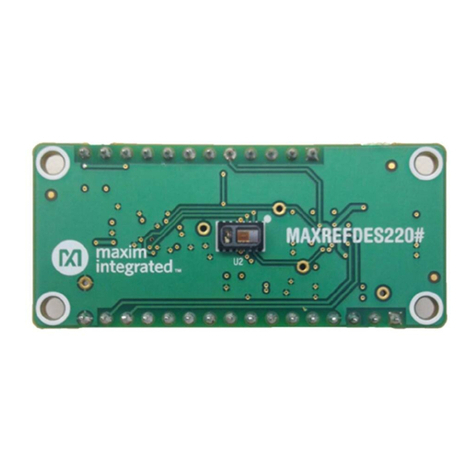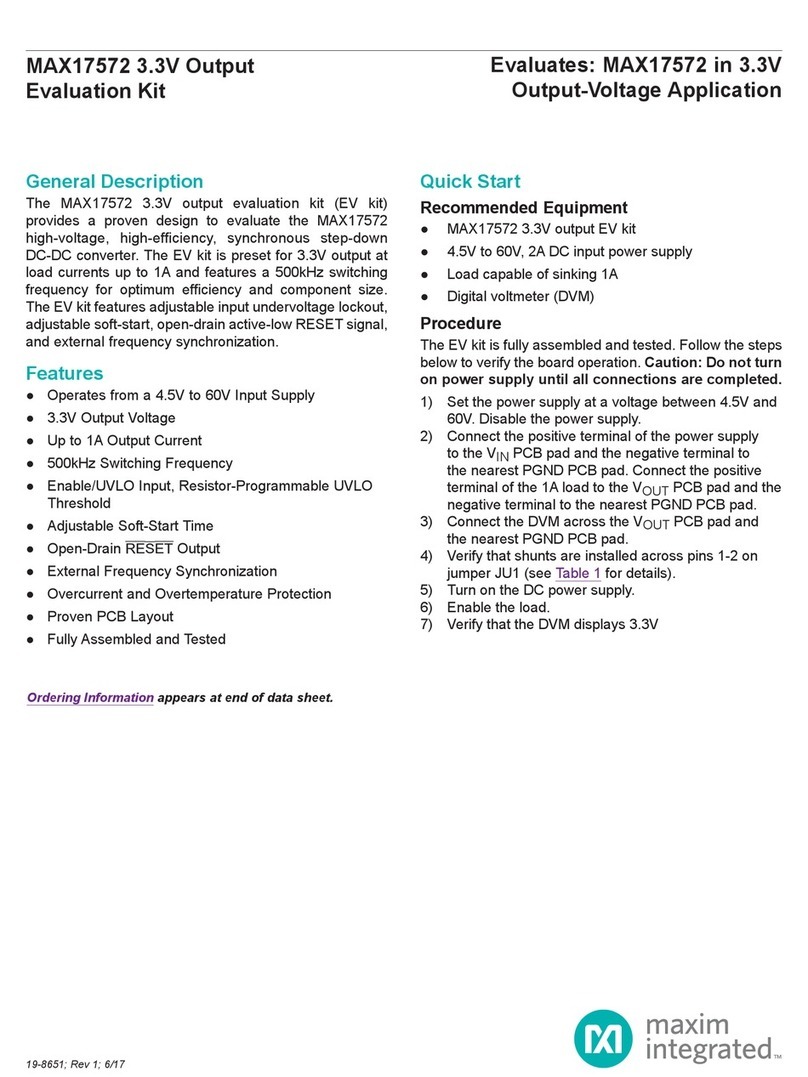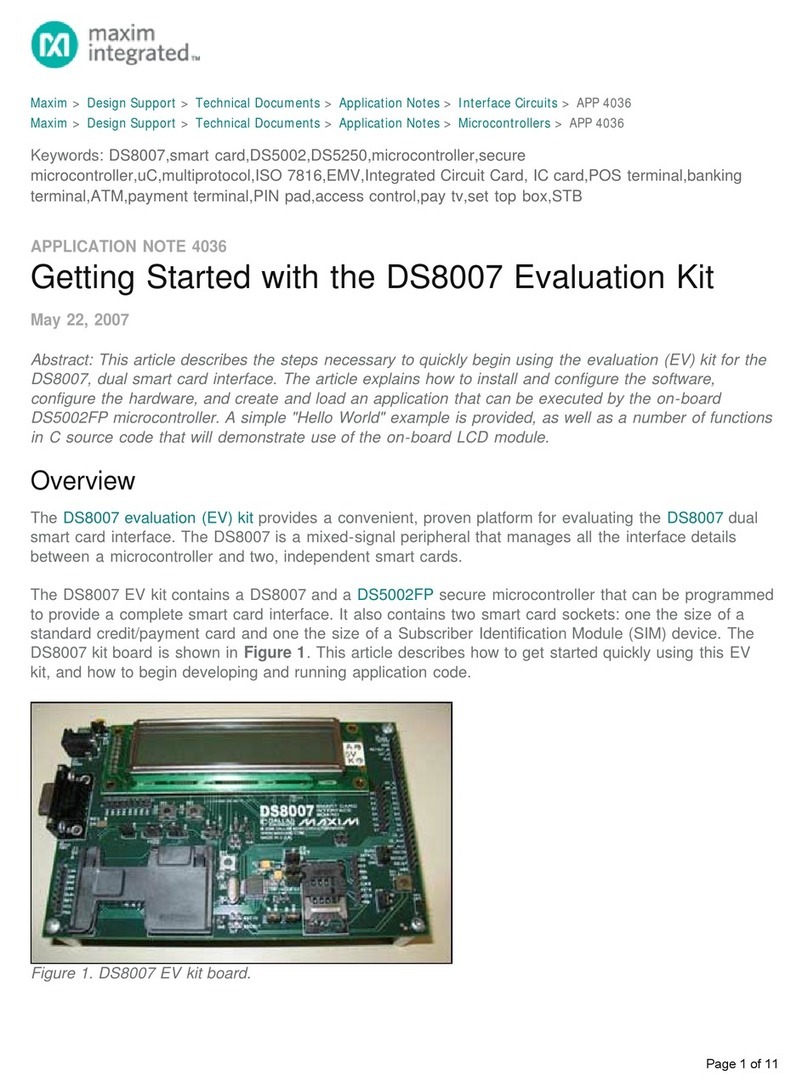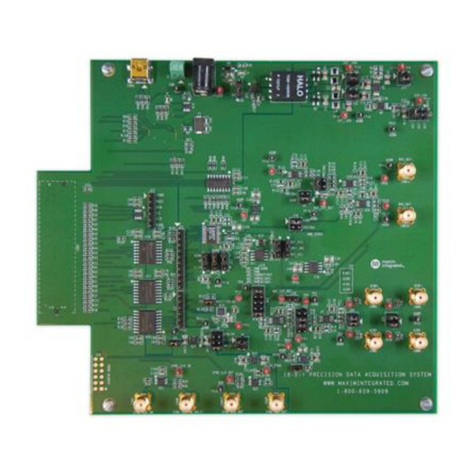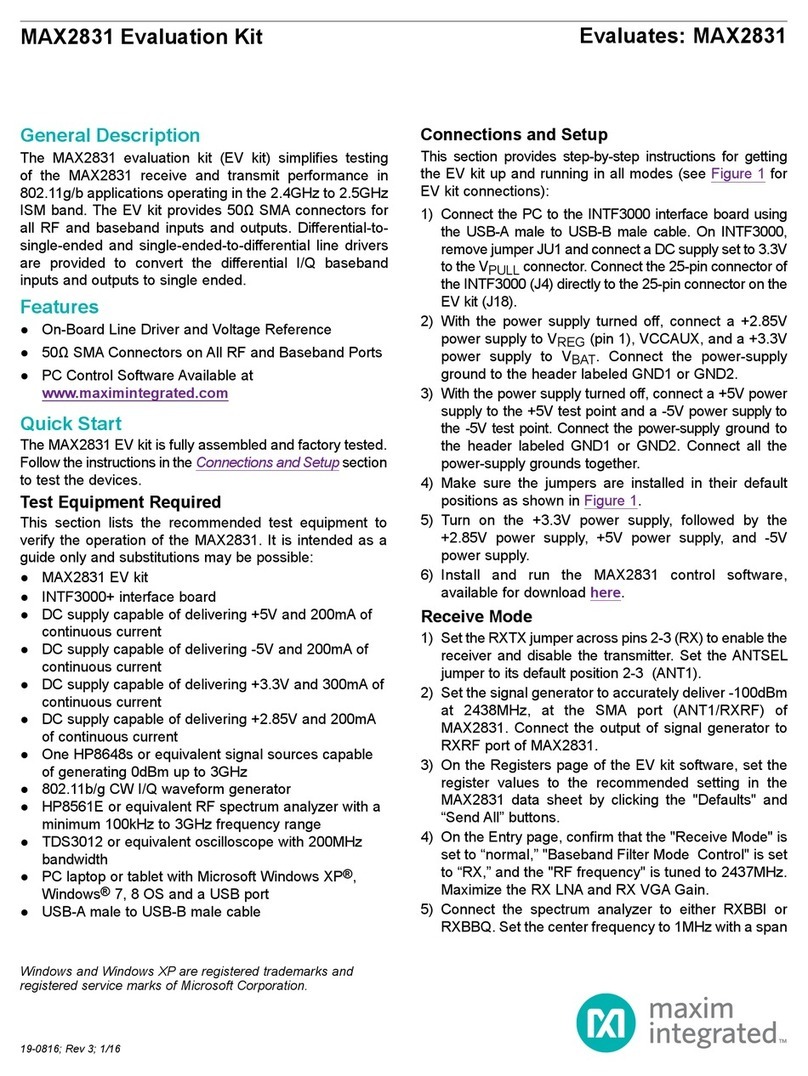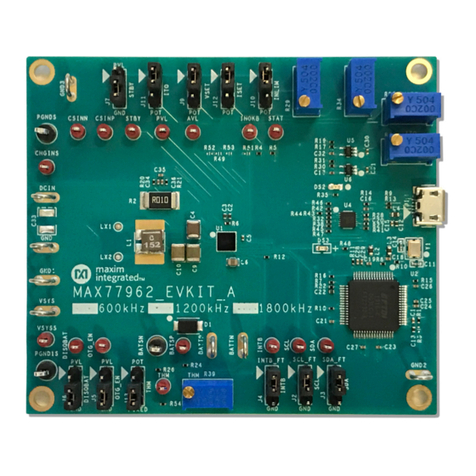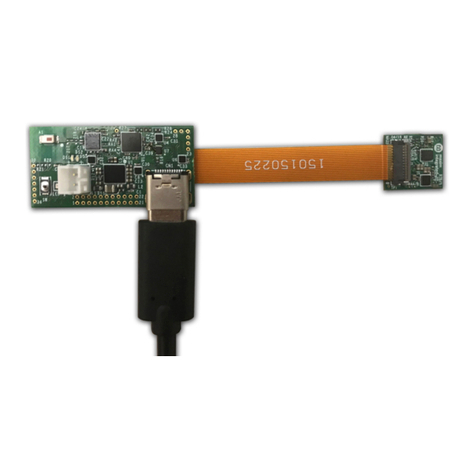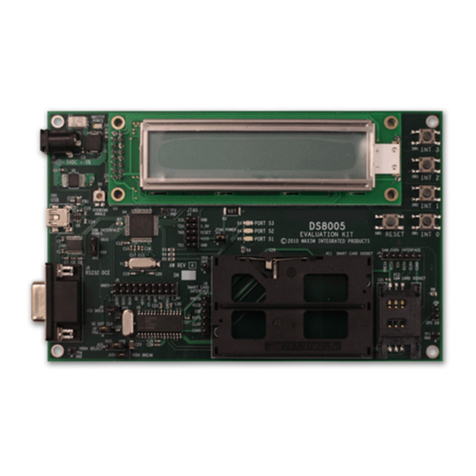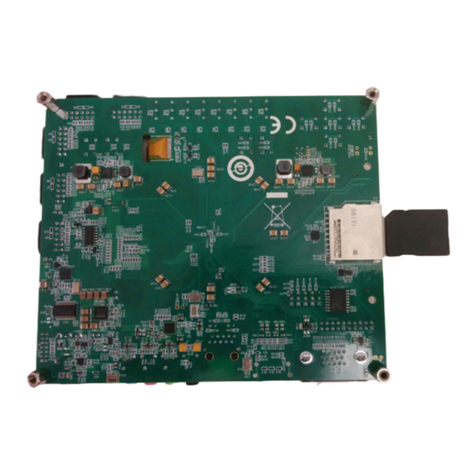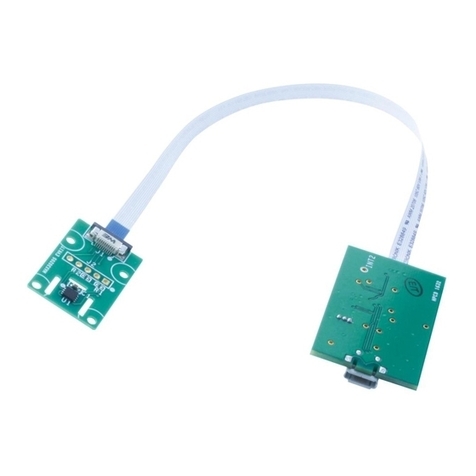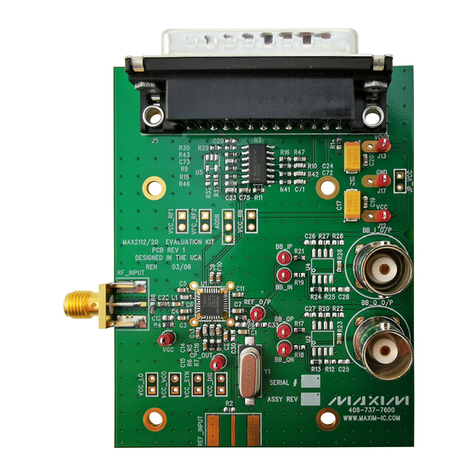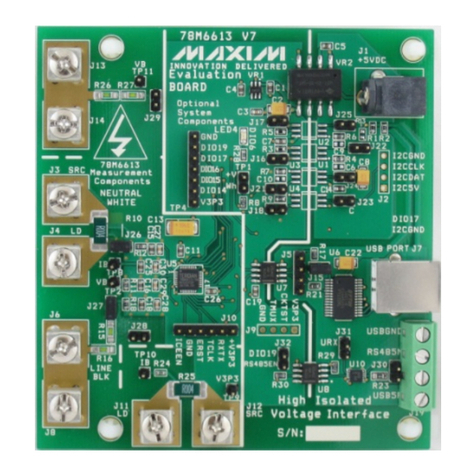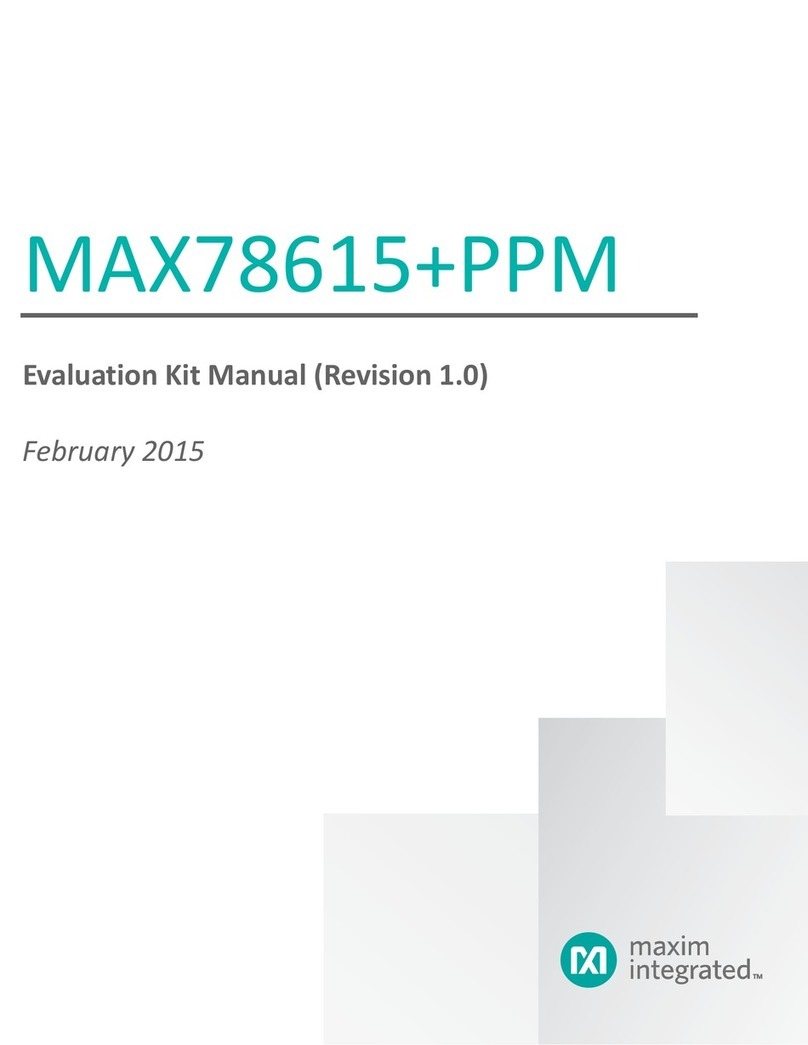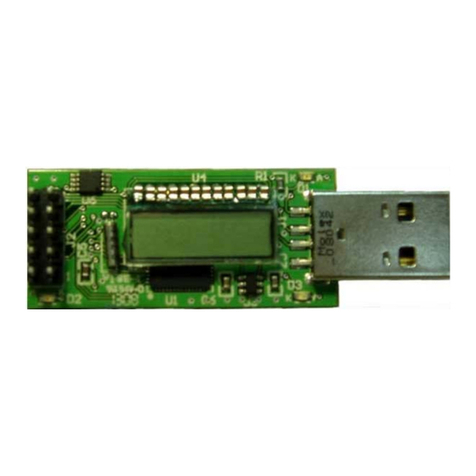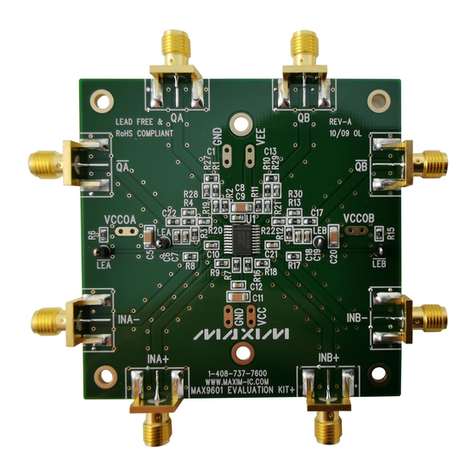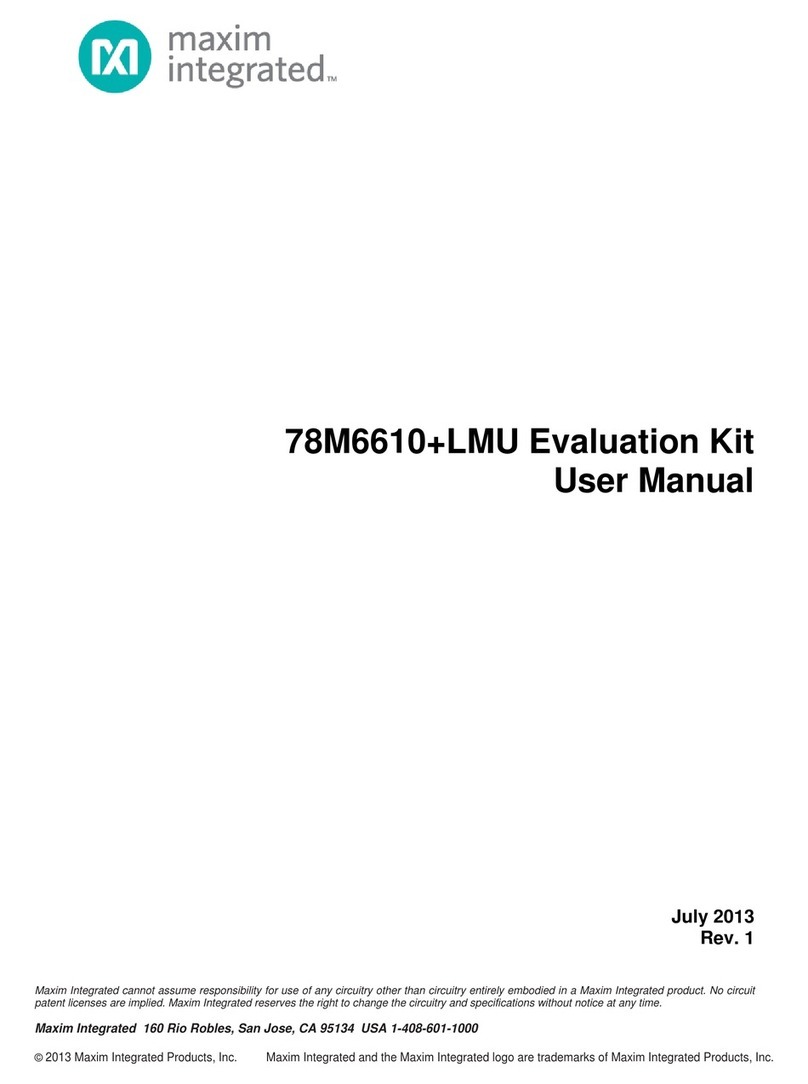
Maxim Integrated
│
3
www.maximintegrated.com
Evaluates: MAX17509 4.5V–16V,
Dual 3A Synchronous Buck Converter
MAX17509 Evaluation Kit
Regulator Enable and Adjustable UVLO
The device can be self-enabled by connecting EN_ to
AVCC, and can optionally be programmed to turn on at
the input-voltage threshold by connecting EN_ to the
resistor-divider between IN_ to GND. The EV kit has
SW1 and SW2 to enable regulator 1 and 2, respectively,
through the input supply or AVCC. Moving the switches
to position 1 enables the device at a 4.1V input UVLO
threshold, while moving to position 3 connects EN_ to
AVCC. Moving a switch to position 2 will disable the
respective regulator. The adjustable-input UVLO threshold
of a regulator can be programmed with top feedback
resistor RU connected between IN_ and EN_, and bottom
feedback resistor RB connected between EN_ and GND.
The adjustable-input UVLO threshold of regulator 1 can
be programmed with the resistor-dividers R15 (RU1) and
R3 (RB1), and regulator 2 with R16 (RU2) and R10 (RB2).
Choose RU_ and then calculate RB_ with the following
equation:
RB_ = RU_ x1.262
VINU - 1.262
Where VINU is the input threshold voltage at which the
device is required to turn on. Ensure that VINU is higher
than 0.93 x VOUT.
Mode/Phase Shift/ Switching Frequency
(MODE)
The MODE pin sets the device as a single-phase, dual-
output/dual-phase, or single-output, while also setting the
phase-shift and switching frequency. The EV kit operates
in a single-phase, dual-output conguration, each with
up to 3A output current. Each regulator operates with
180° out-of-phase and 1MHz switching frequency. The
phase-shift mode can be selected to be either 0° or 180°
out-of-phase in the dual-output mode only. The device is
also capable of conguring different switching frequency
options: 0.5MHz, 1MHz, 1.5MHz, and 2MHz for input voltage
up to 6V.
Soft-Start/Soft-Stop Options and Over-Current
Response (SS1)
The SS1 pin sets regulator 1’s soft-start timing among 1,
4, 8, and 16ms, as well as its soft-stop option. The SS1 pin
also sets options to attempt regulation following an under
and overcurrent event. The two options for fault response
due to UC/OC protection are: (1) hiccup and (2) Brickwall
and latchoff. The EV kit is set to 8ms soft-start timing,
with soft-stop enabled for regulator 1, and Brickwall-and-
latchoff overcurrent response for both regulators.
Soft-Start/Soft-Stop Options and Switching
Slew rate (SS2)
The SS2 pin sets regulator 2’s soft-start timing among 1,
4, 8, and 16ms, as well as its soft-stop option. The SS2
pin also sets the switching slew rate of both regulators
to either maximum or minimum. The EV kit is set to 8ms
soft-start timing, with soft-stop enabled, for regulator 2,
and maximum switching slew rate for both regulators.
External Clock Synchronization (SYNC)
The SYNC pin allows frequency-synchronization to
external clock. The EV kit provides a SYNC test point (TP1)
that allows connecting an external clock for frequency
synchronization with frequency within the 900kHz
to 1.3MHz range before regulation starts for stable
operation of 1MHz internal switching frequency at the
12VIN range, and within 0.7–2.75 of the internal switching
frequency, with a limit of 450kHz to 2.2MHz for the 5VIN
range. The minimum external clock high pulse width
should be greater than 30ns. The minimum voltage
should be below 0.6V, with the maximum level being
above 1.8V (e.g., 0 to 5V).
